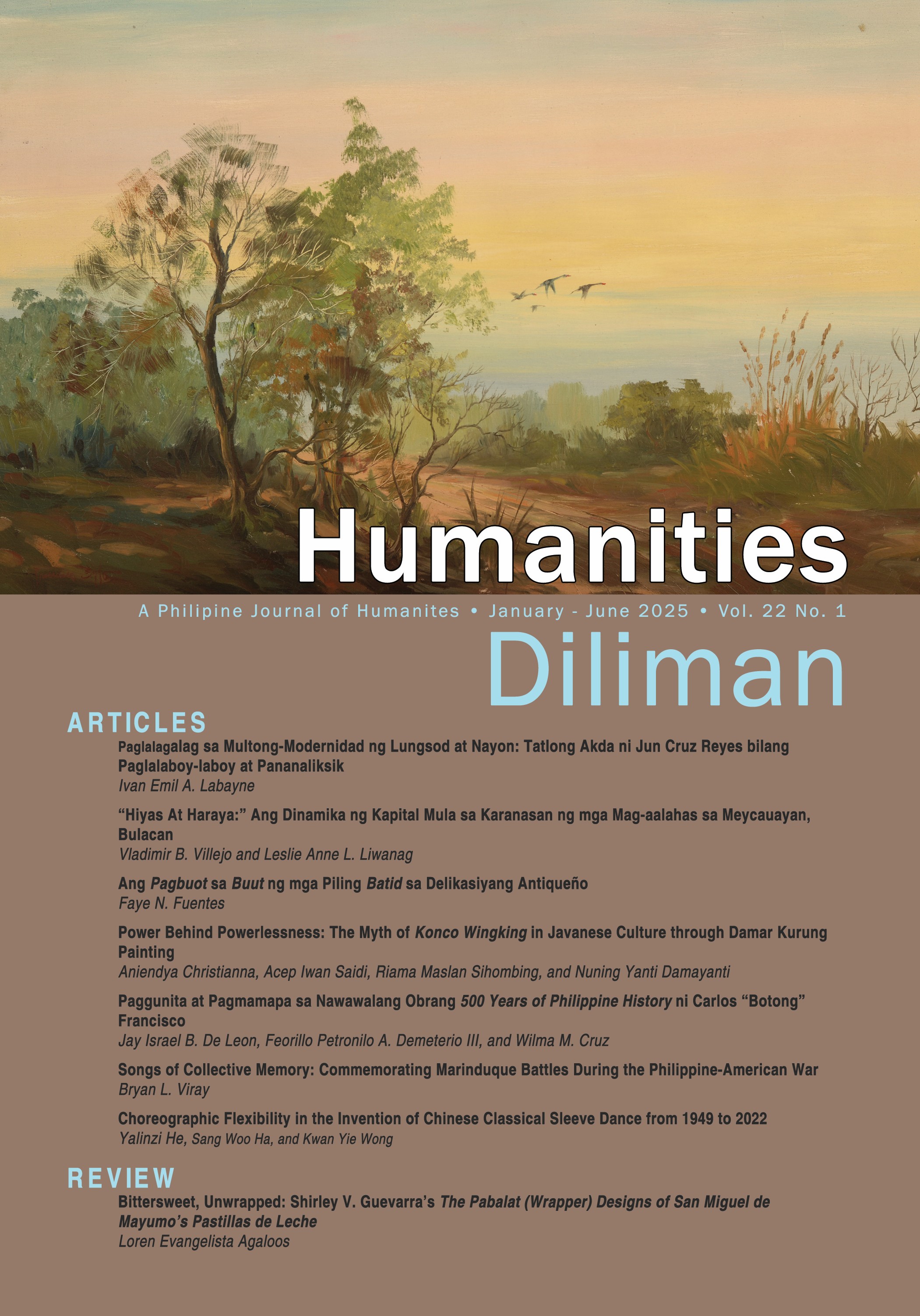Paglalagalag sa Multong-Modernidad ng Lungsod at Nayon: Tatlong Akda ni Jun Cruz Reyes bilang Paglalaboy-laboy at Pananaliksik
Abstract
Malapitang binasa ng papel na ito ang tatlong pampanitikang akda ni Jun Cruz Reyes—Ilang Taon na ang Problema Mo?, Tutubi, Tutubi, ‘Wag Kang Magpahuli sa Mamang Salbahe, at Ang Huling Dalagang Bukid at ang Authobiography na Mali: Isang Imbestigasyon—upang ipanukala ang palaboy bilang Filipinong katapat ng Kanluraning flaneur. Sinundan ang pagbubulakbol at pagbubulay-bulay ng palaboy sa tatlong akda, kung saan itinutumbas ito sa mga tauhan ni Reyes, o kay Reyes mismo. Pinagana ang palaboy—na manunulat, mananaliksik, at manlalakbay din—upang lampasan ang pigura ng flaneur. Ginawa ito sa pamamagitan ng pagsasakasaysayan ng pag-usbong kapwa ng flaneur at ng palaboy. Matatagpuan ang huli sa mga akda ni Reyes: isang aktibistang mag- aaral sa mga unang araw ng Batas Militar; isang mananaliksik na nakikipanayam at nakikipamuhay sa mga nasa laylayan ng lipunan—mga katutubo, isang sniper at organisador para sa rebolusyonaryong kilusan, isang lider-kabataan sa siyudad—at isang guro’t manunulat na tumatawid-tawid sa pagitan ng lungsod kung saan siya nagtuturo at ng kaniyang kinalakhang baryo sa Bulacan. Ang pagsipat sa mga palaboy na ito at sa iba’t ibang uri ng kanilang paggalaw at paglalakbay ay pagmumuni rin tungkol sa mga lungsod at kanayunan at kanilang sari-saring ugnayan.
--
Closely reading three literary works of Jun Cruz Reyes—Ilang Taon na ang Problema Mo?, Tutubi, Tutubi, ‘Wag Kang Magpahuli sa Mamang Salbahe, and Ang Huling Dalagang Bukid at ang Authobiography na Mali: Isang Imbestigasyon— this paper proposes the image and personage of the palaboy as a Filipino counterpart of the Western flaneur. The palaboy and his meanderings and ruminations are followed and situated in these three works, associating them both with Reyes’s characters and Reyes the author himself. The palaboy—which the paper relates to figures like the writer-researcher and the traveler—is mobilized to engage with and go beyond the figure of the flaneur. This is done by distinguishing the historical contexts giving rise to the flaneur and the palaboy, and locating the latter in Reyes’s three works. In these works, the palaboy takes the form of a student activist during the first days of Martial Law; a researcher interviewing and living with society’s marginalized—indigenous people, a sniper and an organizer for a revolutionary movement, and a youth leader in the cities—and a writer-teacher going back-and-forth the city where he teaches, and his cherished hometown in Bulacan. Looking closely at these three palaboys and the contexts of their moving about and travels also allows for a reflection on the urban and rural spaces and how they variously intertwine with each other.


